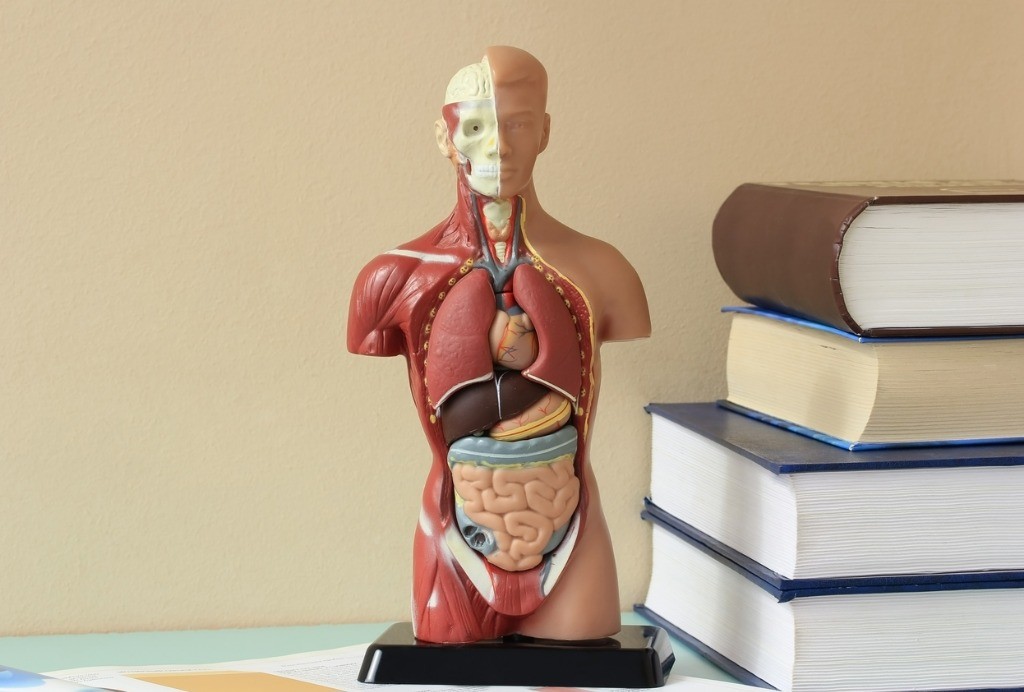Introduction
Is human anatomy and physiology hard? Embarking on the quest to comprehend these intricacies is truly commendable, given their profound significance in healthcare and nursing.
The intricacies of the human body, often explored through renowned textbooks like “Holes Essentials of Human Anatomy and Physiology,” open doors to a world of knowledge, but it’s not uncommon for students to wonder, “Is human anatomy and physiology hard?” Let’s unravel this question and explore the secrets to mastering these sciences with excitement and confidence.
1. Importance of Understanding Human Anatomy and Physiology
Is human anatomy and physiology hard?. Aspiring healthcare professionals, including nurses and doctors, need a comprehensive understanding of human anatomy and physiology. The human body is a complex system of interconnected parts, each with a specific function. This intricate web of organs, tissues, and cells forms the foundation of medical knowledge, enabling healthcare practitioners to diagnose, treat, and prevent various health conditions.
2. Holes Essential Of Human Anatomy and Physiology
One of the essential companions on the journey to mastering human anatomy and physiology is the textbook “Holes Essentials of Human Anatomy and Physiology.” Authored by Shier, Butler, and Lewis, this acclaimed resource provides a comprehensive and accessible approach to these sciences. With detailed illustrations, clear explanations, and a focus on real-world applications, “Holes Essentials” becomes a trusted guide for students navigating the complexities of the human body.
The Fundamentals of Anatomy and Physiology
1. Anatomy and Physiology: Is Human Anatomy And Physiology Hard?
Anatomy and physiology are two distinct yet interrelated branches of biological sciences. Human Anatomy and Physiology involves the study of the structure and function of the human body, diving into the details of organs, tissues, and cells. Anatomy focuses on the physical structure, while physiology explores how these structures function and interact.
2. The Connection Between Anatomy and Physiology
The beauty of these sciences lies in their synergy. Understanding the structure of organs elucidates their function, and conversely, knowledge of physiological processes informs the understanding of how the body is structured. This interconnectedness is vital for healthcare professionals, as it provides a holistic perspective on the human body’s intricacies.
3. The Role of These Sciences in Healthcare and Nursing
Nursing, in particular, relies heavily on a strong foundation in anatomy and physiology. From assessing patients to administering treatments, nurses draw upon their knowledge to deliver optimal care. The ability to comprehend the human body’s intricacies enhances diagnostic skills, enabling healthcare practitioners to make informed decisions for the well-being of their patients.
Unveiling The Challenges
1. Common Perceptions of Difficulty in Studying Anatomy and Physiology
Many students entering the realm of anatomy and physiology anticipate challenges. The volume of information, complex terminology, and the need for a deep understanding of biological processes can be daunting. However, it’s crucial to approach these challenges with a positive mindset, recognizing that perseverance and effective study strategies can lead to success.
2. Why Is Human Anatomy And Physiology Hard?
Anatomy and physiology are inherently intricate due to the vast amount of information and the need for a multidimensional understanding. Many concepts in anatomy require visualization of three-dimensional structures, while physiology demands a grasp of dynamic processes. Additionally, the integration of knowledge across various systems adds to the complexity. Yet, it’s the challenge that makes the journey worthwhile and the eventual mastery even more rewarding.
Simultaneous Mastery: Thriving in Combined Courses
1. Exploring the Feasibility and Challenges of Taking Anatomy and Physiology Simultaneously
Some students opt to take anatomy and physiology courses simultaneously, a decision that comes with its own set of advantages and challenges. While it allows for a more holistic understanding of the human body, it demands effective time management and a proactive approach to studying.
2. Tips for Success in Combined Coursework
To succeed in combined anatomy and physiology courses, students can adopt strategies such as creating a cohesive study schedule, utilizing resources like “Holes Essentials of Human Anatomy and Physiology,” and seeking support from instructors and peers. Balancing the workload and breaking down information into manageable sections can make the simultaneous mastery of these subjects an achievable feat.
Unveiling the Realities of Nursing Careers
1. The Practical Applications of Anatomy and Physiology in Nursing
Nursing professionals apply their knowledge of anatomy and physiology in diverse healthcare settings. From conducting physical assessments to interpreting diagnostic results, nurses constantly rely on their understanding of the human body to provide effective and compassionate care.
2. Future Healthcare Professionals
Future healthcare professionals, especially those aspiring to become nurses, can rest assured that the investment in mastering anatomy and physiology will pay off. These sciences form the backbone of a healthcare education, laying the groundwork for a successful and fulfilling career in the medical field.
What is the Hardest Area of Human Physiology & Anatomy?

Determining the single hardest area of human physiology and anatomy can be subjective, as individual preferences, learning styles, and backgrounds play a significant role. However, some students may find neuroanatomy, which focuses on the intricate structure and functions of the nervous system, to be particularly challenging. This field delves into complex topics such as the brain, spinal cord, and peripheral nerves, requiring a comprehensive understanding of both anatomy and physiology. Neuroanatomy demands a strong grasp of intricate details and the ability to connect structures with their functions, making it a formidable aspect of the broader study of human physiology and anatomy.
How Can You Make Human Anatomy and Physiology Classes Easier?
Making human anatomy and physiology classes easier requires a combination of effective study strategies, resource utilization, and a proactive approach to learning. Here are some tips to make these classes more manageable:
Active Learning Techniques:
- Engage in active learning methods such as flashcards, diagrams, and concept mapping to reinforce your understanding.
- Teach the material to someone else or explain it in your own words to solidify your knowledge.
Regular Review:
- Implement a consistent review schedule to reinforce the learned material regularly. This helps prevent cramming and enhances long-term retention.
Utilize Visual Aids:
- Take advantage of visual aids like anatomical models, charts, and interactive online resources. Visualizing structures can enhance your understanding.
Group Study:
- Join study groups to discuss complex concepts with peers. Explaining concepts to others and hearing their perspectives can enhance your understanding.
Practice with Past Papers:
- Solve past exam papers or practice questions to familiarize yourself with the exam format and identify areas where you need more focus.
Utilize Online Resources:
- Explore online platforms, video lectures, and interactive simulations to supplement your textbook learning. Websites and apps dedicated to anatomy and physiology can provide additional insights.
Break Down Complex Topics:
- Break down complex topics into smaller, more manageable parts. Focus on mastering one concept before moving on to the next.
Seek Help When Needed:
- Don’t hesitate to ask questions and seek help from your instructor, classmates, or tutors when you encounter difficulties. Clarifying doubts early on prevents confusion later.
Create Mnemonics:
- Develop mnemonics or acronyms to remember complex sequences or lists. Mnemonics can be effective memory aids.
Stay Healthy:
- Ensure proper sleep, nutrition, and exercise. A healthy lifestyle supports cognitive function and concentration, crucial for grasping complex topics.
Stay Consistent:
- Consistency is key. Regular, focused study sessions are more effective than sporadic, intense cramping.
Relate to Real-Life Applications:
- Relate anatomical and physiological concepts to real-life scenarios or clinical applications. Understanding the practical implications can make the material more interesting and memorable.
By incorporating these strategies into your study routine, you can make human anatomy and physiology textbook more approachable and enhance your overall learning experience.
Conclusion
Mastering human anatomy and physiology involves acknowledging the challenges while adopting effective strategies for success. Whether studying from “Holes Essentials of Human Anatomy and Physiology” or other reputable resources, students can navigate the intricacies of these sciences with determination and resilience.
As future healthcare professionals, embracing the holistic perspective is paramount. Beyond the human anatomy and physiology textbook and lectures, recognizing the synergy between mind and body contributes to a comprehensive understanding of health, enriching both personal and professional journeys.
Frequently Asked Questions and Answers
1. How to Pass Anatomy and Physiology?
To succeed in anatomy and physiology, create a well-structured study schedule, use comprehensive resources like “Holes Essentials,” seek support from instructors and peers, and adopt effective study strategies.
2. Is Anatomy and Physiology 2 Harder or Easier Than the First Course?
The difficulty of Anatomy and Physiology 2 varies, but it generally builds upon the foundational knowledge from the first course. With a solid understanding of the basics, the second course becomes more manageable.
3. What Makes Anatomy and Physiology Difficult?
The intricacies of three-dimensional structures, dynamic processes, and the integration of knowledge across systems contribute to the perceived difficulty. However, a positive mindset and effective study strategies can overcome these challenges.
4. Many Concepts in Anatomy Seem Complex. How Can I Simplify My Understanding?
Breaking down complex concepts into smaller, more manageable parts, utilizing visual aids, and seeking clarification from instructors can simplify the understanding of intricate anatomical concepts.
5. How Can I Efficiently Master Human Anatomy and Physiology for Nursing Careers?
Efficiently mastering anatomy and physiology for nursing involves active engagement with the material, creating a solid study plan, and recognizing the practical applications of these sciences in healthcare settings.











Leave a Reply